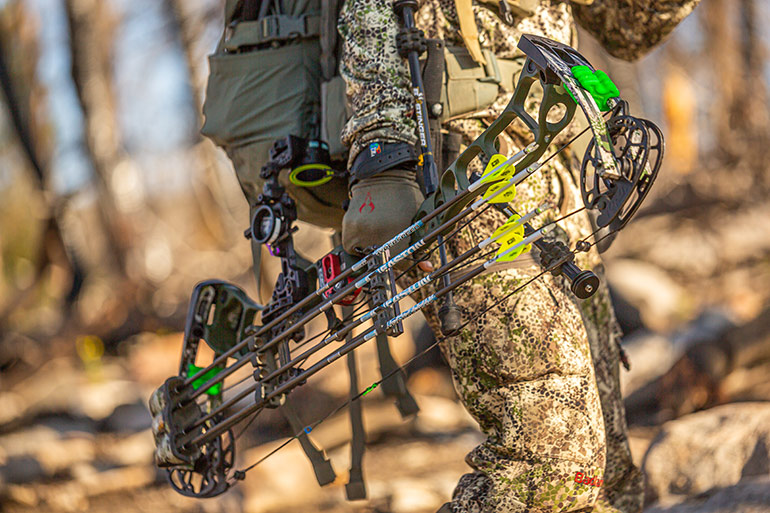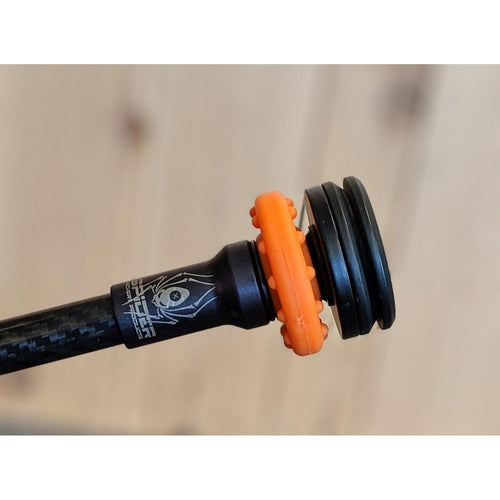Master the Art of Archery: Recognizing the Value of a Stabilizer in Your Configuration
Archery, an old sporting activity that needs ability, precision, and focus, has mesmerized people for centuries. Whether one is a skilled archer or simply starting their journey, the relevance of a stabilizer in their setup can not be overemphasized. This vital tool plays a substantial duty in boosting precision and boosting overall performance. By recognizing the benefits of making use of a stabilizer, taking into consideration the ideal factors when picking one, and correctly setting up and readjusting it, archers can elevate their abilities to brand-new heights. Allow us check out the details of grasping the art of archery and reveal the very useful function that a stabilizer plays in attaining success on the range.
The Function of a Stabilizer in Archery
A stabilizer plays an important duty in archery by improving equilibrium and reducing vibrations throughout the shot. When an archer draws the bowstring and launches it, there is a transfer of power that can cause the acquiesce shake. These vibrations can negatively influence the accuracy of the shot. Nonetheless, a stabilizer assists to combat these resonances by dissipating the power and taking in.
One of the main benefits of a stabilizer is its capability to enhance equilibrium. When an archer holds a bow, it can be challenging to maintain a consistent goal. The weight of the stabilizer aids to distribute the weight equally, minimizing the stress on the archer's arm and enhancing security. This enables the archer to concentrate on their purpose and implement an extra accurate shot.
In addition to equilibrium, a stabilizer likewise assists to minimize torque. When an archer releases the bowstring, there is a natural tendency for the bow to turn in the hand. This turning, recognized as torque, can create the arrowhead to divert off-course. The weight and style of a stabilizer counteract this rotation, making sure a more precise and consistent shot.
Advantages of Utilizing a Stabilizer
The use of a stabilizer in archery provides many benefits that enhance an archer's performance and total shooting experience. A stabilizer helps to lessen the vibrations produced upon release of the arrow. These vibrations can cause the acquiesce torque or twist, causing unreliable shots. By soaking up and wetting these vibrations, the stabilizer enhances the stability of the bow, permitting for even more accurate and regular shots.
Second of all, a stabilizer aids to balance the bow by including weight to the front end. This weight distribution combats the all-natural propensity of the acquiesce tip ahead upon launch, decreasing the quantity of movement and improving the archer's capacity to keep aim on target.

Last but not least, a stabilizer can additionally function as a shock absorber, minimizing the shock and recoil experienced upon release. This not only enhances the convenience of shooting however likewise decreases the risk of injury or pressure on the archer's body.
How a Stabilizer Enhances Precision
Enhancing the accuracy of an archer's shots, a stabilizer plays an essential role in enhancing total efficiency. archery stabilizer. By including stability to the bow, a stabilizer helps decrease the undesirable activity and vibration that can occur throughout a shot. This reduction in motion permits the archer to maintain a stable goal, leading to even more constant and accurate shots

In addition, a stabilizer aids to dampen resonances that take place upon release. These resonances can trigger the bow to drink, impacting the arrowhead's trajectory and accuracy. By soaking up and dissipating these vibrations, a stabilizer helps to preserve the bow's security and guarantee a smooth and exact shot.
Moreover, a stabilizer can likewise aid in balancing the weight distribution of the bow (archery stabilizer). By including weight to the front of the bow, a stabilizer aids to balance the weight of devices, such as quivers or sights, which may be affixed to the bow. This well balanced weight circulation aids the archer keep a constant and controlled capturing placement, leading to boosted precision
Factors to Consider When Picking a Stabilizer
When choosing a stabilizer for your bow, it is necessary to think about several variables that will certainly add to its total performance and suitability for your individual shooting design. The first factor to think about is the length of the stabilizer. Stabilizers can be found in different lengths, varying from short to long. Longer stabilizers generally offer much more security and balance, but they can additionally be much heavier and a lot more tough to maneuver. Much shorter stabilizers, on the other hand, provide much better maneuverability however might give up some stability.
An additional aspect to consider is the weight of the stabilizer. The weight of the stabilizer can impact the balance of your bow. A heavier stabilizer can assist to boost and minimize vibrations stability, leading to a steadier shot. However, a lighter stabilizer might be favored by shooters who focus on ability to move and rate.
Furthermore, it is essential to think about the design and construction of the stabilizer. Some stabilizers have flexible features, such as flexible length or adjustable weights, which enable you to personalize the stabilizer to your certain requirements. The materials used in the construction of the stabilizer can also impact its efficiency. Carbon fiber stabilizers are durable and light-weight, while aluminum stabilizers supply an equilibrium in between weight his response and rigidity.
Last but not least, it is vital he has a good point to consider your capturing design and preferences. Different stabilizers may function better for sure shooting designs, such as target shooting or hunting. It is advisable to speak with skilled archers or professionals to establish which stabilizer will ideal suit your individual needs. Generally, thinking about these aspects will assist make certain that you choose a stabilizer that boosts your shooting experience and improves your accuracy.
Tips for Properly Mounting and Changing a Stabilizer
Appropriate installment and modification of a stabilizer is critical for maximizing its performance and making sure optimum capturing precision. When mounting a stabilizer, it is vital to comply with a few essential steps to ensure its efficiency. First, figure out the ideal size of the stabilizer based upon your shooting style and choices. Longer stabilizers supply more security however can be less maneuverable, while much shorter stabilizers provide raised maneuverability however might sacrifice stability. When you have actually selected the suitable size, attach the stabilizer to the bow making use of the supplied placing hardware. Ensure that the stabilizer is securely attached and lined up with the bow's riser.
After installing the stabilizer, it is required to make adjustments to accomplish the desired balance and shot consistency. Beginning by changing the weight distribution along the stabilizer. This can be done by including or getting rid of weights from the stabilizer's weight system. Trying out various weight configurations to locate the balance that functions ideal for you. Furthermore, consider changing the angle of the stabilizer to fine-tune the shot. A mild ahead or in reverse tilt can influence the bow's equilibrium and just how it responds during the shot.

Verdict
In conclusion, a stabilizer plays a vital role in archery by enhancing precision and decreasing bow torque. By adding weight to the bow, it aids to stabilize the shot and stabilize. When selecting a stabilizer, factors such as product, weight, and length need to be taken into consideration to meet private demands. Correct installation and change of the stabilizer are likewise essential for optimum efficiency. Understanding using a stabilizer can significantly improve the archer's skill and accuracy.
Moreover, a stabilizer can additionally assist in stabilizing the weight circulation of the bow. By including weight to the front of the bow, a stabilizer helps to stabilize the weight of devices, such as quivers or sights, which may be connected to the bow. Some stabilizers have flexible functions, such as adjustable length or flexible weights, which enable you to customize the stabilizer to your specific needs. Carbon fiber stabilizers are lightweight and sturdy, while light weight aluminum stabilizers offer an equilibrium between weight and rigidity.
Longer stabilizers supply more stability yet can be much less manoeuvrable, while much shorter stabilizers provide raised maneuverability however may sacrifice security.